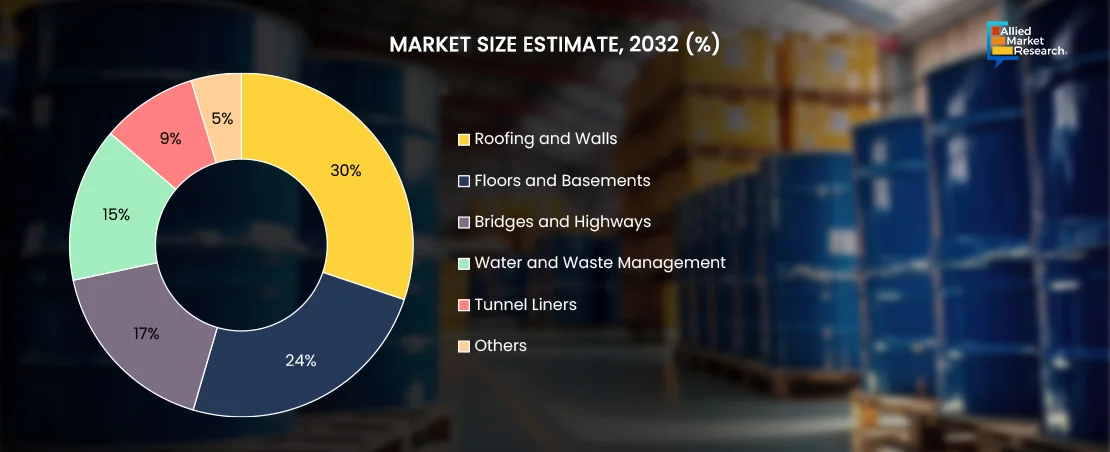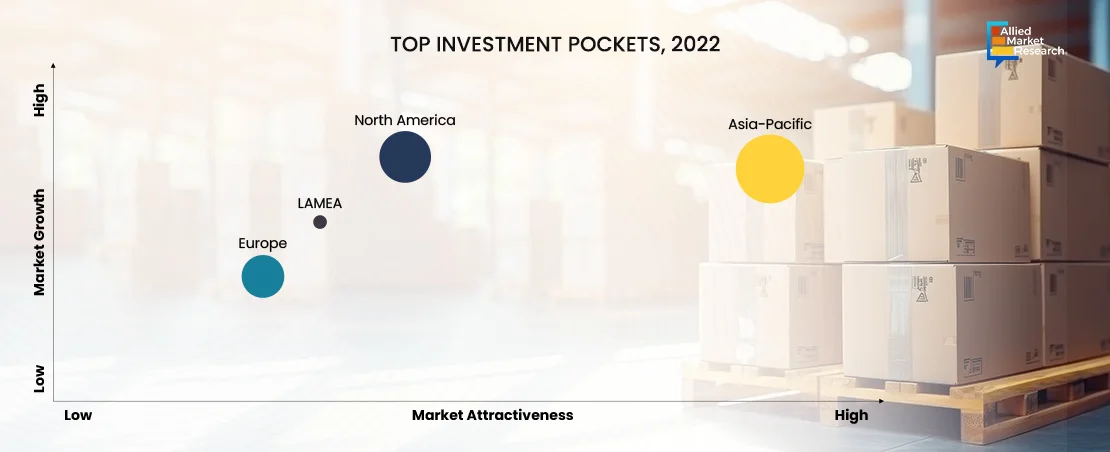Table Of Contents

Yerukola Eswara Prasad

Pooja Parvatkar
Materials & Chemicals: Allied Market Research’s Top 5 Emerging Markets in Q1 2024

Allied Market Research (AMR) has identified the top 5 emerging markets in the materials & chemicals sector for the first quarter of 2024, showcasing the most promising areas of growth and investment.
These markets are identified and prioritized based on AMR’s in-house ‘Title Matrix Tool’ which analyzes markets with premeditated parameters from research analysts and other parallelly working teams. The reports are rated based on relevance and current importance, ongoing events, CAGR, increasing demand from clients, key player relevance, revenue, and other parameters.
The reports aim to address various business questions, including current size & forecast, key driving factors & opportunities, major players & their strategies, challenges & potential risks, regional dynamics, and competitive landscape. The reports also include retrospective analysis and historical data to provide a comprehensive understanding of the industry.
Waterproofing Products
Urbanization trends and the growth in the construction industry, mainly in the new residential and commercial sectors, are driving the demand for the report. The global waterproofing products market is expected to reach $66.1 billion by 2033. The report analysis includes segmental information including the base numbers and forecast estimations by application as below:

The popularity of PVC roofing systems has increased recently due to several unique qualities, such as their long lifespan, resilience to extreme weather and temperature changes, low lifecycle costs, energy efficiency, heat and solar reflectance, flame resistance, chemical and grease resistance, ease of maintenance, installation flexibility, inherent recyclability or repurposing, and other benefits.
This market is strategically important to research right now due to the significant growth and demand in the construction industry, which drives the need for effective waterproofing products.

Flexible Packaging
Research on flexible packaging is strategically important due to the increase in demand for fast-moving consumer goods and a rise in e-commerce activities & food delivery services. The global flexible packaging market is anticipated to reach $325.8 billion by 2032. The research analyzes the flexible packaging industry from 2022 to 2032, including both retrospective and forward-looking analysis. For instance, in 2022, Asia-Pacific region emerged as the leading region in terms of revenue share, capturing nearly two-fifths of the global flexible packaging market. Forecasts suggest its continued dominance throughout the forecast period. However, North America is poised for significant growth at the fastest CAGR of 6.03% from 2023 to 2032. As per the study, the region’s demand is propelled by the presence of major players and industrial giants, particularly benefiting from the development of the personal care industry in Mexico and increased demand for pharmaceuticals in Canada.
Thus, players in the packaging industry can benefit by understating the various trends & strategic approaches undertaken and formulate their strategies accordingly.

Power Coatings
The global power coatings market is projected to reach $20.8 billion by 2032. Research on power coatings is strategically important due to several factors. The market is experiencing significant growth due to the expanding end-use industries and the increasing demand for durable, eco-friendly coatings. Additionally, as sustainability and environmental concerns continue to drive decision-making, researching and analyzing the market for powder coatings can help businesses align with these trends and meet regulatory requirements.
The study by AMR on powder coatings provides prominent players including AkzoNobel N.V., PPG Industries, Sherwin Williams, BASF SE, Axalta Coating Systems, Kansai Nerolac Paints Limited, Jotun, IFS Coatings, The Valspar Corporation, and Tiger Coatings. These companies are at the forefront of innovation and expansion, driving the industry forward with their diverse product portfolios and strategic initiatives. Additionally, AMR has listed other notable players contributing to the competitiveness. This information on key players in the global powder coatings industry offers businesses invaluable insights for strategic decision-making.
Technical Textile
The global technical textile market was valued at $191.7 billion in 2022 and is anticipated to reach $331.8 billion by 2032. Technical textile offers mechanical, electrical, durable, thermal, and other functional properties, due to which they are used pre-dominantly in chemical, defense, automotive, and other end-use industries. The new infrastructure construction has witnessed a growth, which has resulted in increased manpower and equipment needed at these projects. Hence, the demand for technical textiles, especially in the construction industry, is expected to witness a robust growth in the coming years.
Research on technical textiles is strategically important due to the growing demand in end-use industries, infrastructure development, emphasis on safety & protection, and the need to identify trends and opportunities.
The report analyzes the market from 2022 to 2032. For instance, this study by AMR offers segmentation based on material, process, end-use application, and region. The report highlights that the synthetic polymers/fibers of the material segment secured the highest revenue share in 2022, reflecting the extensive use of synthetic fibers across diverse applications, such as automotive, construction, clothing, home furnishing, and filtration. This dominance can be attributed to the growing population and rapid urbanization, which are anticipated to further propel the growth of the segment in the coming years. Thus, leveraging this comprehensive understanding of synthetic fibers offers companies the knowledge needed to optimize their business strategies, enhance product offerings, and stay ahead in a dynamic and evolving market landscape.
Biosurfactants
Biosurfactants are produced from renewable sources, emphasizing sustainability and low waste. This helps manufacturers lower their environmental impact and cater to regulatory guidelines. The global biosurfactant market was valued at $1.9 billion in 2022 and is projected to reach $3.2 billion by 2032, growing at a CAGR of 5.4% from 2023 to 2032. Research on the biosurfactants industry is important mainly because regulations worldwide are pushing for environmental responsibility, prompting both developed and developing economies to turn to biosurfactants as a sustainable alternative to synthetic ones.
As consumers become more conscious of environmental and health impacts, demand for biosurfactants rises across industries including food, pharmaceuticals, cosmetics, and oil recovery, further propelling the global biosurfactants market. The report analyzes the market from 2022 to 2032, providing qualitative & quantitative analysis, current trends, estimations, dynamics, COVID-19 impact, and analyzes various strategic approaches undertaken by the top players. For instance, the production cost of biosurfactants is higher as compared to synthetic surfactants. If biosurfactants manufacturers can mitigate this issue along with improved functionalities, biosurfactants can gain widespread acceptance globally. Companies across the biosurfactant supply chain can use the study to identify competitor approaches and formulate their own business strategies.
Strategic Perspectives and Potential of Emerging Markets
The top 5 emerging markets highlighted by AMR in the materials & chemicals sector for Q1 2024 present a diverse range of opportunities for investors, innovators, and stakeholders. These markets offer substantial growth opportunities and require strategic research and analysis to capitalize on their potential. The waterproofing products market is strategically important due to the increasing demand in the construction industry. Research on the flexible packaging market is crucial as it experiences growth driven by the demand for fast-moving consumer goods and the rise of e-commerce and food delivery services. Research on the power coatings market helps businesses align with sustainability trends and meet regulatory requirements. The technical textile market is strategically important due to infrastructure development and the need for safety and protection. Lastly, research on the biosurfactants market is strategically important due to global regulations emphasizing environmental responsibility and the increasing consumer demand for sustainable alternatives. Conducting research on these emerging markets in the materials and chemicals sector is crucial for businesses to understand market dynamics, identify growth opportunities, and develop effective strategies to succeed in these rapidly evolving industries.
The Final Deliverables
The final deliverables of the reports will include market sizing, competitive intelligence, trends, and strategy recommendations. These deliverables would enable clients to gain a comprehensive understanding of the flexible packaging market, assess market opportunities, benchmark their strategies against competitors, and make informed business decisions. The reports on all the markets will provide insights into market size, growth rates, market shares of key players, competitive landscape analysis, emerging trends, and recommendations for business strategies and market entry. Get in touch with our esteemed analysts to gain more insights.

